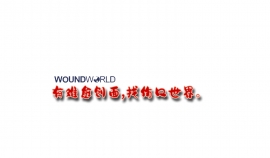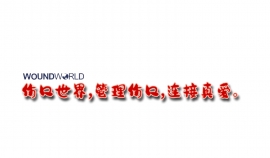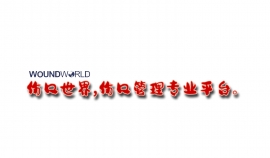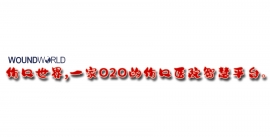文献精选
A. van de Kuit1 , R. J. Krishnan2 , W. H. Mallee3 , L. M. Goedhart4 , B. Lambert4 , J. N. Doornberg4*, T. M. J. S. Vervest5 and J. Martin2
Abstract
Purpose: This systematic review and meta-analysis aimed to study surgical site infection of wound closure using staples versus sutures in elective knee and hip arthroplasties.
Methods: A systematic literature review was performed to search for randomized controlled trials that compared surgical site infection after wound closure using staples versus sutures in elective knee and hip arthroplasties. The primary outcome was surgical site infection. The risk of bias was assessed with the Cochrane risk of bias assessment tool. The relative risk and 95% confidence interval with a random-effects model were assessed.
Results: Eight studies were included in this study, including 2 studies with a low risk of bias, 4 studies having ‘some concerns’, and 2 studies with high risk of bias. Significant difference was not found in the risk of SSI for patients with staples (n= 557) versus sutures (n= 573) (RR: 1.70, 95% CI: 0.94–3.08, I 2 =16%). The results were similar after excluding the studies with a high risk of bias (RR: 1.67, 95% CI: 0.91–3.07, I 2= 32%). Analysis of studies with low risk of bias revealed a significantly higher risk of surgical site infection in patients with staples (n=331) compared to sutures (n= ( 331) (RR: 2.56, 95% CI: 1.20–5.44, I 2=0%). There was no difference between continuous and interrupted sutures P> 0.05). In hip arthroplasty, stapling carried a significantly higher risk of surgical site infection than suturing (RR: 2.51, 95% CI: 1.15–5.50, I 2 I 2=22%; P>0.05). =0%), but there was no significant difference in knee arthroplasty (RR: 0.87, 95% CI: 0.33–2.25,
Conclusions: Stapling might carry a higher risk of surgical site infection than suturing in elective knee and hip arthroplasties, especially in hip arthroplasty.
Keywords: Surgical site infection, Wound closure, Total knee replacement, Total hip replacement, Arthroplasty, Systematic review
*Correspondence: 该Email地址已收到反垃圾邮件插件保护。要显示它您需要在浏览器中启用JavaScript。 4 Department of Orthopaedics, University Medical Center Groningen, Postbus 30.001, 9700 RB Groningen, The Netherlands Full list of author information is available at the end of the article
© The Author(s) 2022. Open Access This article is licensed under a Creative Commons Attribution 4.0 International License, which permits use, sharing, adaptation, distribution and reproduction in any medium or format, as long as you give appropriate credit to the original author(s) and the source, provide a link to the Creative Commons licence, and indicate if changes were made. The images or
other third party material in this article are included in the article’s Creative Commons licence, unless indicated otherwise in a credit line to the material. If material is not included in the article’s Creative Commons licence and your intended use is not permitted by statutory regulation or exceeds the permitted use, you will need to obtain permission directly from the copyright holder. To view a copy of this licence, visit http://creativecommons.org/licenses/by/4.0/.
Jayne Joo1 · Aunna Pourang1 · Catherine N. Tchanque‑Fossuo2 · April W. Armstrong3 · Danielle M. Tartar1 · Thomas H. King4 · Raja K. Sivamani1,5,6,7 · Daniel B. Eisen1
Received: 28 May 2021 / Revised: 28 August 2021 / Accepted: 3 September 2021 / Published online: 21 September 2021 © The Author(s) 2021
Abstract
Undermining is thought to improve wound outcomes; however, randomized controlled data regarding its efficacy are lacking in humans. The objective of this randomized clinical trial was to determine whether undermining low to moderate tension wounds improves scar cosmesis compared to wound closure without undermining. Fifty-four patients, 18 years or older,
undergoing primary linear closure of a cutaneous defect with predicted postoperative closure length of≥3 cm on any anatomic site were screened. Four patients were excluded, 50 patients were enrolled, and 48 patients were seen in follow-up. Wounds were divided in half and one side was randomized to receive either no undermining or 2 cm of undermining. The other side received the unselected intervention. Three months, patients and 2 masked observers evaluated each scar using the Patient and Observer Scar Assessment Scale (POSAS). A total of 50 patients [mean (SD) age, 67.6 (11.5) years; 31 (64.6%) male; 48 (100%) white] were enrolled in the study. The mean (SD) sum of the POSAS observer component scores was 12.0 (6.05) for the undermined side and 11.1 (4.68) for the non-undermined side (P=.60). No statistically significant difference was found in the mean (SD) sum of the patient component for the POSAS score between the undermined side [15.9 (9.07)] and the non-undermined side [13.33 (6.20)] at 3 months. For wounds under low to moderate perceived tension, no statistically significant differences in scar outcome or total complications were noted between undermined wound halves and non-undermined halves.
Trail Registry: Clinical trials.gov Identifier NCT02289859. https://clinicaltrials.gov/ct2/show/NCT02289859.
Keywords Cutaneous closure technique · Cutaneous surgery · Scar evaluation · Undermining · Wound tension
Jayne Joo and Aunna Pourang have contributed equally to this * Daniel B. Eisen 该Email地址已收到反垃圾邮件插件保护。要显示它您需要在浏览器中启用JavaScript。
1 Department of Dermatology, University of California, Davis, School of Medicine, 3301 C St, Ste 1400, Sacramento, CA 95816, USA
2 Department of Dermatology, University of New Mexico School of Medicine, Albuquerque, NM, USA
3 Department of Dermatology, Keck School of Medicine at University of Southern California, Los Angeles, CA, USA
4 Department of Dermatology, University of California, Davis, School of Medicine, Sacramento, CA, USA
5 Department of Biological Sciences, California State University, Sacramento, CA, USA
6 College of Medicine, California Northstate University, Elk Grove, CA, USA
7 Pacific Skin Institute, Sacramento, CA, USA
Fay R K Sanders1†, Diederick Penning1†, Manouk Backes1 , Siem A Dingemans1 , Susan van Dieren1 ,
Anne M Eskes1 , J Carel Goslings2 , Peter Kloen3 , Ron A A Mathôt4 , Niels W L Schep5 , Ingrid J B Spijkerman6
and Tim Schepers1*
Abstract
Background: Elective implant removal (IR) after fracture fixation is one of the most common procedures within (orthopedic) trauma surgery. The rate of surgical site infections (SSIs) in this procedure is quite high, especially below the level of the knee. Antibiotic prophylaxis is not routinely prescribed, even though it has proved to lower SSI rates in other (orthopedic) trauma surgical procedures. The primary objective is to study the effectiveness of a single intravenous dose of 2 g of cefazolin on SSIs after IR following fixation of foot, ankle and/or lower leg fractures.
Methods: This is a multicenter, double-blind placebo controlled trial with a superiority design, including adult patients undergoing elective implant removal after fixation of a fracture of foot, ankle, lower leg or patella. Exclusion criteria are: an active infection, current antibiotic treatment, or a medical condition contraindicating prophylaxis with cefazolin including allergy. Patients are randomized to receive a single preoperative intravenous dose of either 2 g of cefazolin or a placebo (NaCl). The primary analysis will be an intention-to-treat comparison of the proportion of patients with a SSI at 90 days after IR in both groups.
Discussion: If 2 g of prophylactic cefazolin proves to be both effective and cost-effective in preventing SSI, this would have implications for current guidelines. Combined with the high infection rate of IR which previous studies have shown, it would be sufficiently substantiated for guidelines to suggest protocolled use of prophylactic antibiotics in IR of foot, ankle, lower leg or patella. Trial registration- Nederlands Trial Register (NTR): NL8284, registered on 9th of January 2020, https://www.trialregister. nl/trial/8284
*Correspondence: 该Email地址已收到反垃圾邮件插件保护。要显示它您需要在浏览器中启用JavaScript。 † F. R. K. Sanders and D. Penning contributed equally to this work
1 Trauma Surgery, Amsterdam UMC, Loc. AMC, G4-137, Meibergdreef 9, 1105 AZ Amsterdam, The Netherlands
Full list of author information is available at the end of the article
© The Author(s) 2021. Open Access This article is licensed under a Creative Commons Attribution 4.0 International License, which permits use, sharing, adaptation, distribution and reproduction in any medium or format, as long as you give appropriate credit to the original author(s) and the source, provide a link to the Creative Commons licence, and indicate if changes were made. The images or other third party material in this article are included in the article’s Creative Commons licence, unless indicated otherwise in a credit line to the material. If material is not included in the article’s Creative Commons licence and your intended use is not permitted by statutory regulation or exceeds the permitted use, you will need to obtain permission directly from the copyright holder. To view a copy of this licence, visit http://creativecommons.org/licenses/by/4.0/. The Creative Commons Public Domain Dedication waiver (http://creativeco mmons.org/publicdomain/zero/1.0/) applies to the data made available in this article, unless otherwise stated in a credit line to the data.
Keywords: Trauma surgery, Orthopedic surgery, Implant removal, Antibiotic prophylaxis, Cefazolin, Surgical site infections, Lower extremity, Foot, Ankle
Niki Gouda1 · Meropi Dimitriadou1 · Georgia Sotiriou1 · Athanasios Christoforidis1
Received: 19 July 2022 / Accepted: 29 August 2022 / Published online: 7 September 2022
Abstract
Aims To investigate the impact of SARS-COV-2 vaccination on the glycaemic control in children and adolescents with
T1DM wearing continuous glucose monitoring (CGM).
Methods Caregivers of children and adolescents with T1DM were questioned regarding SARS-CoV-2 vaccination during their regular visits at the Pediatric Diabetes Outpatient Clinic. Data regarding Time in Range (TIR) (glucose levels: 70–180 mg/dl) 7 days prior and 7 days after a vaccination dose were collected in patients wearing CGM and data regarding insulin daily doses were also obtained for the insulin pump users.
Results From a total of 135 patients eligible for SARS-CoV-2 vaccination, 70 (51.9%) children (37 boys, 52.9%) were vaccinated with at least one dose. Seven patients received only one dose, whereas two children received a third booster shot. No statistically significant difference was observed in either TIR (64.19% post vs. 65.53% pre, p=0.158) or total daily insulin dose (40.08 U/day post vs. 39.32 U/day pre, p=0,282). Additionally, in ten patients on Hybrid Closed-Loop System the percentage of the automated insulin boluses given post-vaccination was not statistically significant different compared to the boluses given pre-vaccination (15.80% vs. 16.90%, p=0,491).
Conclusions Vaccination against SARS-CoV-2 in children and adolescents with T1DM is safe and is not associated with immediate glucose imbalance.
Keywords Type 1 diabetes mellitus · Children · Adolescents · SARS-Cov-2 · Vaccination · COVID-19 © The Author(s) 2022
Managed by Massimo Porta.
* Athanasios Christoforidis 该Email地址已收到反垃圾邮件插件保护。要显示它您需要在浏览器中启用JavaScript。
1 1st Paediatric Department, School of Medicine, Faculty of Health Sciences, Aristotle University of Thessaloniki, Ippokratio General Hospital, 49 Konstantinoupoleosstr, 54642 Thessaloniki, Greece




